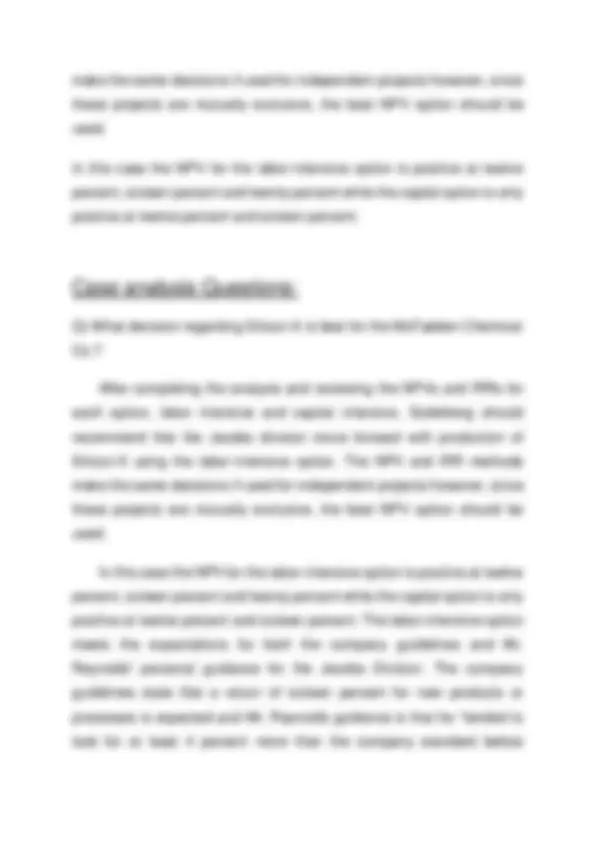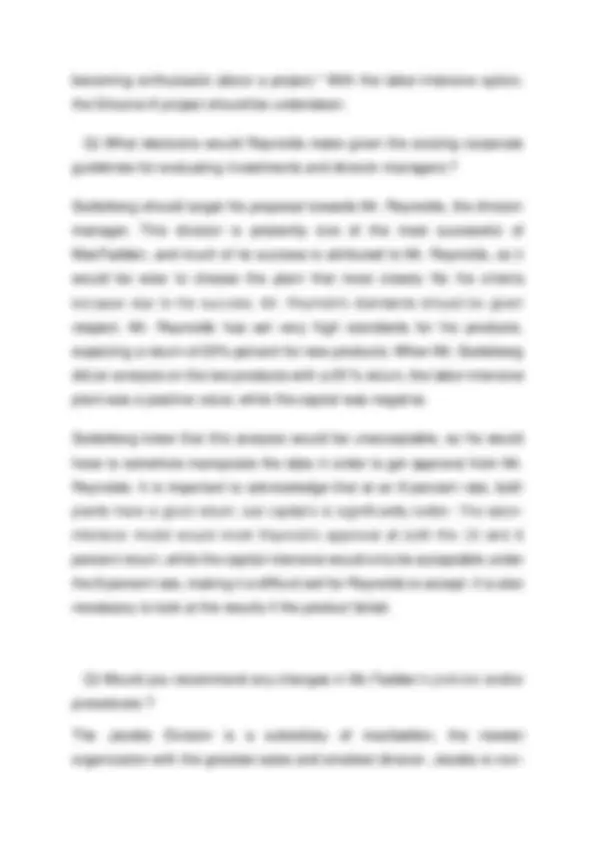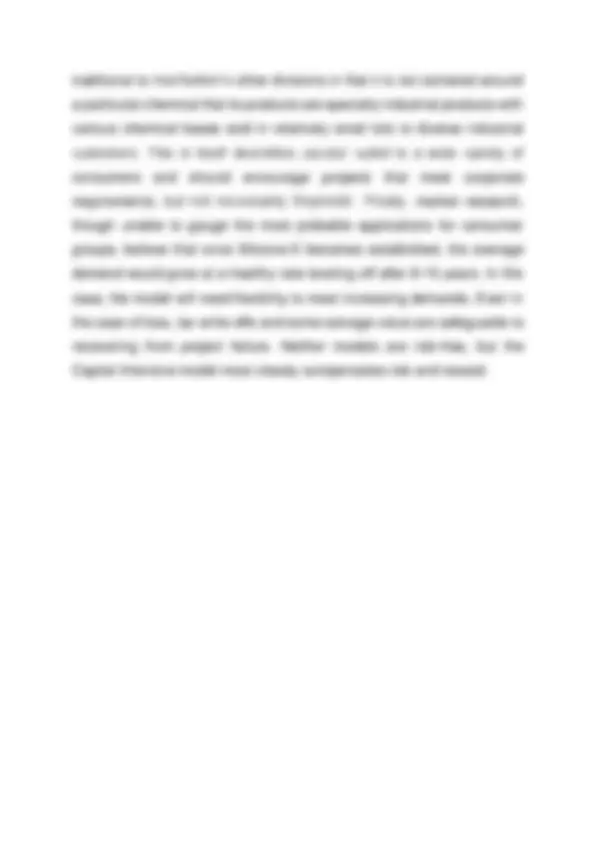





Study with the several resources on Docsity

Earn points by helping other students or get them with a premium plan


Prepare for your exams
Study with the several resources on Docsity

Earn points to download
Earn points by helping other students or get them with a premium plan
Community
Ask the community for help and clear up your study doubts
Discover the best universities in your country according to Docsity users
Free resources
Download our free guides on studying techniques, anxiety management strategies, and thesis advice from Docsity tutors
financial management case study
Typology: Essays (university)
1 / 5

This page cannot be seen from the preview
Don't miss anything!




MacFadden Chemical Company is among the largest chemical firms around the globe. From the year 1980 till the start of 1990’s, the sales of the company was growing at a 10 percent rate. But, with the start of the year 1993, the company realized a decline in its sales growth rate and overall profit. The reason behind this decline was the overcapacity in basic materials in the chemical industry that led to price cutting. Moreover, the companies started to spend huge amounts on their R&D departments as well in order to stay competitive in the market and for marketing purposes. MacFadden Chemical Company consisted of eleven operating divisions that were categorized in three groups. One of its newest divisions, ‘The Jacob Division’, is the smallest division and unlike other divisions, its products are centred on a single core material. The focus of The Jacob Division is on the speciality industry products like dyes, finishes, and adhesives. It manufactures and sells around a hundred and fifty basic products that come with variety as well. Also, unlike other divisions, the sales of The Jacob Division are done in small lots. Most of its products have a sale of around 500,000 dollars. The Jacob Division is one of the fastest growing divisions of MacFadden Chemical Company.
The Jacob Division of the company has been doing research for a new project. The project is called the Silicone-X project. It is a special-purpose coating that adds slipperiness to the surface it is applied on. The product can be used as a coating on a number of different products in order to reduce friction. From the research done, it is expected that Silicone-X is going to have a large customer base but on the other hand, its sales would be done in small lots. The project is analyzed by using two different approaches, i.e. labour intensive method and capital intensive method. Both of the methods use different assumptions and techniques and both have different advantages and risks to the overall success of the project. In this report, we have done an analysis on both of the alternates and have suggested the single best alternative to The Jacob Division regarding Silicone-X project. The project Manager has used a twenty percent discount rate and has forecasted the performance of the product for fifteen years. The two methods that the company has used for forecasting are listed below. ▪ Labour-intensive ▪ Capital-intensive approach. These two methods are used to generate forecasted cash flows for the product. After completing the analysis and reviewing the NPVs and IRRs for each option, labor intensive and capital intensive, Soderberg should recommend that the Jacobs division move forward with production of Silicon-X using the labor-intensive option. The NPV and IRR methods
becoming enthusiastic about a project." With the labor-intensive option, the Silicone-X project should be undertaken. Q) What decisions would Reynolds make given the existing corporate guidelines for evaluating investments and division managers? Soderberg should target his proposal towards Mr. Reynolds, the division manager. This division is presently one of the most successful of MacFadden, and much of its success is attributed to Mr. Reynolds, so it would be wise to choose the plant that most closely fits his criteria because due to his success, Mr. Reynold’s standards should be given respect. Mr. Reynolds has set very high standards for his products, expecting a return of 20% percent for new products. When Mr. Soderberg did an analysis on the two products with a 20 % return, the labor-intensive plant was a positive value, while the capital was negative. Soderberg knew that this analysis would be unacceptable, so he would have to somehow manipulate the data in order to get approval from Mr. Reynolds. It is important to acknowledge that at an 8 percent rate, both plants have a good return, but capital’s is significantly better. The labor- intensive model would meet Reynold’s approval at both the 20 and 8 percent return, while the capital-intensive would only be acceptable under the 8 percent rate, making it a difficult sell for Reynolds to accept. It is also necessary to look at the results if the product failed. Q) Would you recommend any changes in Mc Fadden’s policies and/or procedures? The Jacobs Division is a subsidiary of macfadden, the newest organization with the greatest sales and smallest division. Jacobs is non-
traditional to macfadden’s other divisions in that it is not centered around a particular chemical that its products are specialty industrial products with various chemical bases sold in relatively small lots to diverse industrial customers. This in itself diversifies Jacobs’ outlet to a wide variety of consumers and should encourage projects that meet corporate requirements, but not necessarily Reynolds’. Finally, market research, though unable to gauge the most probable applications for consumer groups, believe that once Silicone-X becomes established, the average demand would grow at a healthy rate leveling off after 8-10 years. In this case, the model will need flexibility to meet increasing demands. Even in the case of loss, tax write-offs and some salvage value are safeguards to recovering from project failure. Neither models are risk-free, but the Capital Intensive model most closely compensates risk and reward.